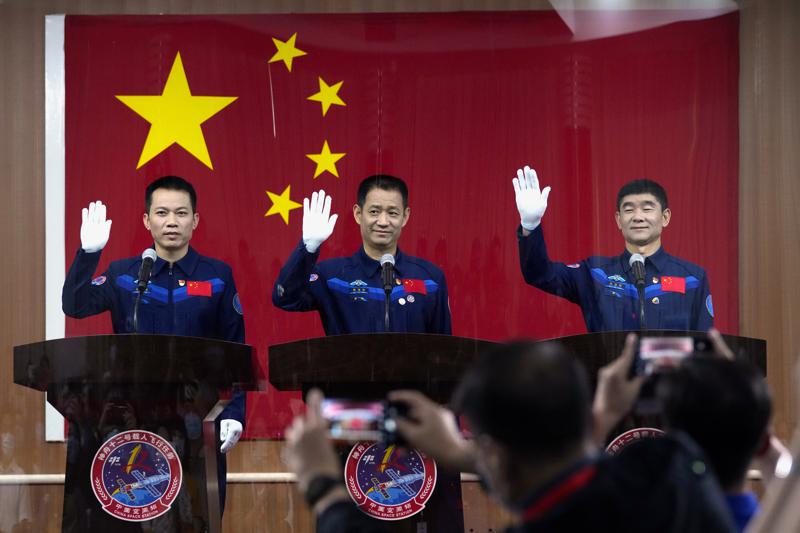Europe in decline?
The Nobel Prize winning Columbia University economist Edward Phelps maintains that innovation is the key to economic growth, prosperity and human happiness.
The mission carries special political meaning for the ruling Communist Party as it prepares to celebrate its centenary next month.

Chinese astronauts, from left, Tang Hongbo, Nie Haisheng, and Liu Boming wave at a press conference at the Jiuquan Satellite Launch Center ahead of the Shenzhou-12 launch from Jiuquan in northwestern China, Wednesday, June 16, 2021.
The three members of the first crew to be sent to the new space station of China say they’re eager to get to work making their home for the next three months habitable, setting up testing and experiments, and preparing for a series of spacewalks.
The three met with reporters on Wednesday from inside a germ-free glassed-in room, hours before they are due to blast off on Thursday morning.
“First of all, we need to arrange our home in the core module, then get started on a whole range of diagnostic tests on crucial technology and experiments,” said mission commander Nie Haisheng, the most senior of the three who is making his third trip to space.
Advertisement
“The task is very arduous and there are many challenges. My colleagues and I will cooperate closely, operate carefully and overcome all difficulties,” Nie said.
Unsurprisingly, all said they had complete confidence in the mission, which carries special political meaning for the ruling Communist Party as it prepares to celebrate its centenary next month.
Liu Boming, whose one previous flight in 2011 included China’s first spacewalk, said there would be multiple such activities during the mission as the astronauts carry out their science experiments, conduct maintenance, and prepare the Tianhe, or Heavenly Harmony, core module to receive two other modules to be sent up next year.
Tang Hongbo, who is making his first flight since being selected among the second batch of astronauts in 2010, said he had been training virtually non-stop for years. “There is pressure,” Tang said. “But where there is pressure there is motivation and … I have confidence in myself and have confidence in our team.”
Thursday’s launch begins the first crewed space mission in five years for an increasingly ambitious space program. China has sent 11 astronauts into space since becoming the third country to do so on its own in 2003 and has sent orbiters and rovers to the moon and Mars.
The astronauts will be traveling in the Shenzhou-12 spaceship launched by a Long March-2F Y12 rocket set to blast off at 9:22 a.m. (0122 GMT) from the Jiuquan launch center in northwestern China.
While the first Tianhe crew are men, women will be part of future crews, officials have said.
Beijing doesn’t participate in the International Space Station, largely due to U.S. concerns over the Chinese program’s secrecy and its military connections. Despite that, foreign science missions and possibly foreign astronauts are expected to visit the Chinese station in the future, China Manned Space Agency Assistant Director Ji Qiming told reporters at Jiuquan.
“Outer space is the common wealth of people all over the world, and exploring the universe is the shared cause of all mankind,” Ji said.
“We are willing to carry out international cooperation and exchanges with all countries and regions worldwide that are committed to the peaceful use of outer space,” Ji said, adding that existing cooperation with countries including Russia, Italy, and Germany along with the United Nations Office for Outer Space Affairs was being expanded.
“I believe that in the near future when the Chinese space station is complete, we will see Chinese and foreign astronauts taking on joint missions to the Chinese space station,” Ji said.
Ji conceded the construction of the Chinese station had come “relatively late,” but said that was also an advantage in that it allowed China to use the latest technologies and concepts, particularly in the areas of reliability and safety.
The mission is the third of 11 planned through next year to add the additional sections to the station and send up crews and supplies. The main living section of the station was launched in April while the other two modules will be primarily for scientific work.
Once completed, the station will allow for stays of up to six months, similar to the much larger International Space Station. The Chinese station reportedly is intended to be used for 15 years and may outlast ISS, which is nearing the end of its functional lifespan.
Advertisement